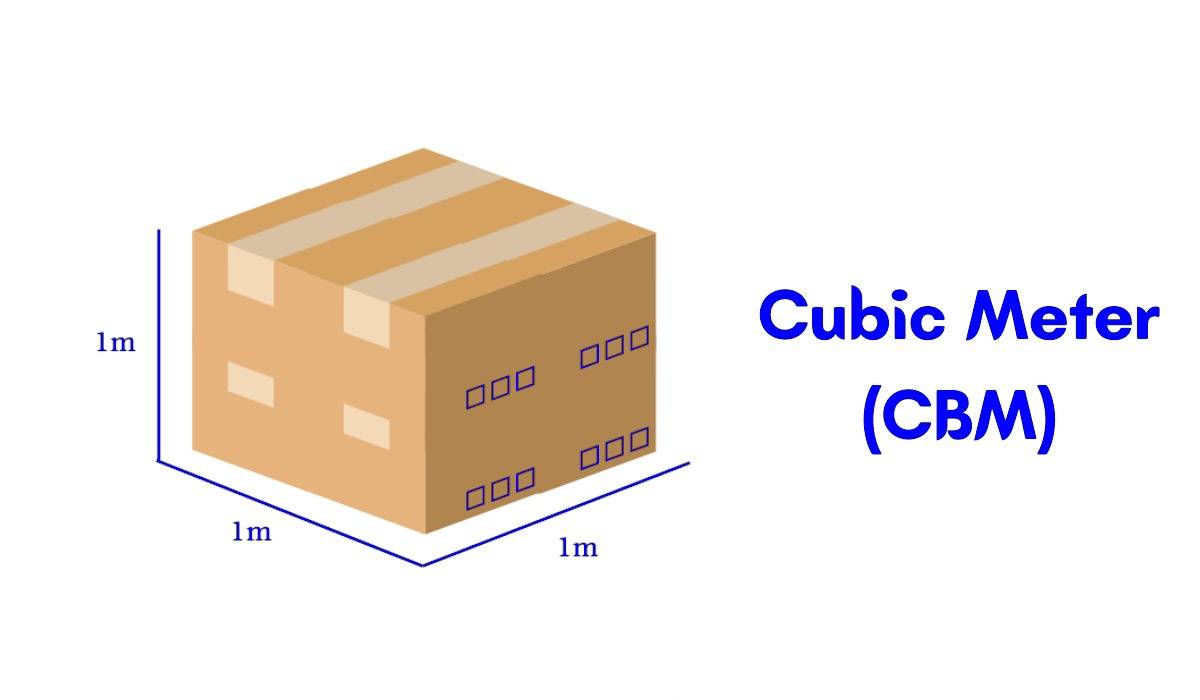Optimize your business: use unlimited savings with Pazago fulfilled now!
Get Started ->As an Indian SME involved in international trade, managing shipping costs and logistics is likely one of the most pressing challenges. With global shipping activity gaining momentum in 2025, efficient container space utilization has become critical for maintaining cost control and competitiveness.
According to Container Trade Statistics (CTS), global container volumes reached 15.4 million TEU in January 2025, reflecting a 5.8% year-over-year increase. When adjusted for nautical distance, global TEU*Miles rose by 8.1%, signaling a higher absorption of vessel capacity. Notably, head-haul container trade volumes grew by 12.9%, highlighting strong demand across major trade lanes.
In this scenario one of the most essential metrics for cost optimization is CBM (Cubic Meter). Accurately measuring CBM helps ensure businesses are charged fairly for the volume their cargo occupies, particularly in Less-than-Container Load (LCL) shipments.
This blog will explore the concept of CBM, its significance in international shipping, and how to calculate it accurately to enhance logistics planning and minimize shipping expenses.
What is CBM?
CBM full form in shipping stands for cubic meter, the standard unit used to calculate the cargo volume in the shipping and logistics industry.
Understanding CBM is crucial because it helps determine how much space a shipment will occupy, affecting shipping costs and logistics planning.

What is CBM in Shipping and Logistics
CBM (Cubic Meter) plays a crucial role in the shipping and logistics industry by directly affecting the efficiency of transportation and cost management. It helps businesses estimate shipping costs accurately, optimize the use of container or truck space, and ensure proper handling of cargo.
The following points highlight how CBM impacts cost efficiency, space optimization, freight forwarding, and cargo insurance:
- Cost Efficiency: Shipping costs are often calculated based on the cargo volume. Knowing your shipment's CBM can help you estimate costs more accurately and choose the most economical shipping method.
- Space Optimization: Whether filling a truck or a shipping container, knowing the CBM allows you to maximise space. This means you can pack more goods in a single shipment, reducing the number of shipments needed and saving money.
- Freight Forwarding: CBM is critical for freight forwarders who arrange the transportation of goods. Accurate CBM measurements ensure the right amount of space is allocated for your cargo, minimising the risk of damage during transit.
- Cargo Insurance: In the world of shipping, anything can happen. Accurate CBM calculations can be key to ensuring your cargo is adequately insured. They help assess the value of the goods and determine the right insurance coverage.
Optimize your cargo space and reduce costs with Pazago’s integrated logistics services.
A clear understanding of CBM is only the first step. Applying it effectively requires knowing how it translates into actual container space and usable volume during shipping.
Interesting Read: Calculating Costs for Oversize Load Shipping and Freight Rates
Understanding CBM Fit for Containers
When planning a shipment, it's important to calculate the cubic meter (CBM) volume to estimate how many units can fit into a shipping container. While this may seem like a simple comparison between total shipment volume and the container’s capacity, the reality is more nuanced.
Due to the shapes, sizes, and packaging of items, as well as the method of loading, a container’s full capacity is rarely utilized. There is typically some unusable space, especially around irregularly shaped or fragile items. To help with planning, here is a general estimate of the usable volume (CBM) for standard container sizes:
Note: These figures serve as rough planning estimates. The actual CBM you can use will depend on your cargo’s packaging, stacking ability, and fragility.
Once container space is measured using CBM, the next step is to understand how weight factors into freight pricing
Ocean Freight: KG to CBM Conversion
In ocean freight, a common rule is that 1 CBM is equivalent to 1 metric ton, or 1000 kilograms. This equivalence simplifies the process of calculating chargeable volume for Less than Container Load (LCL) shipments. The following conversion guide offers quick reference points:
- 1 kg = 0.001 CBM
- 10 kg = 0.01 CBM
- 50 kg = 0.05 CBM
- 100 kg = 0.1 CBM
- 200 kg = 0.2 CBM
- 500 kg = 0.5 CBM
- 1000 kg = 1 CBM
This one-to-one weight-to-volume ratio applies specifically to ocean freight and is widely used by freight forwarders and carriers when determining shipping costs.
While ocean freight uses a straightforward CBM-to-weight ratio, air cargo relies on a different calculation method that accounts for volumetric weight to determine pricing.
Air Cargo: KG to CBM Conversion
For air freight, the conversion from kilograms to CBM involves a volumetric weight calculation rather than a direct ratio. The standard formula used is:
Volumetric Weight (kg) = (Length × Width × Height in cm) ÷ 6000
Using this formula, 1 CBM is approximately equal to 167 kg of chargeable weight in air cargo terms. This standard helps airlines balance the space occupied by cargo with its actual weight and apply fair pricing based on volume and weight.
Understanding how CBM is applied across transport modes sets the foundation for accurate logistics planning. The next step is learning how to calculate CBM with precision.
Calculating the CBM
Calculating CBM is a crucial part of the shipping process, directly affecting the space your cargo will occupy and the shipping costs you incur.
The formula to calculate CBM in shipping is straightforward:
CBM = Length × Width × Height
However, understanding and applying this formula can make a difference in your shipping process.
Step-by-Step Guide to Calculating CBM

Let’s break down how to calculate CBM in shipping, making it simple and error-free.
- Measure in Meters: Start by measuring your cargo's length, width, and height. These measurements must be in meters. If you’re dealing with dimensions in centimetres or inches, convert them to meters first.
For example, you have your basic measurements if your cargo measures 2 meters in length, 1.5 meters in width, and 1 meter in height. - Apply the Formula: Once you have the dimensions, multiply them together. Using our example:
- Length = 2 meters
- Width = 1.5 meters
- Height = 1 meter
- CBM = 2 × 1.5 × 1 = 3 cubic meters
You now know that your cargo will occupy three cubic meters of space.
Note: If you are handling multiple items, simply calculate the CBM for each item separately and then add them together. This will give you the total volume your shipment will occupy.
Why Accurate CBM Calculation Matters?
Now that you know how to calculate CBM, let’s look at why getting this right is so crucial in shipping:
- Cost Efficiency: Many freight charges are based on the volume your goods occupy. Accurate CBM calculations can help you avoid overpaying for space you don’t need.
- Logistics Planning: Understanding the exact CBM of your cargo enables better planning and use of container space, potentially reducing the number of shipments required.
- Insurance Coverage: Accurate CBM ensures that your cargo insurance covers the correct volume, safeguarding your shipment against loss or damage.
Master CBM calculations with Pazago Portal, ensuring your shipments are precise, cost-effective, and fully managed from purchase order to delivery.
Understanding how to calculate CBM for standard shipments is essential, but it's equally important to know how to calculate it for irregular shapes to ensure accurate space utilization.
Also Read: How To Reduce Container Shipping Costs
How to Calculate CBM in Shipping for Different Shapes?
The shape of a package plays a critical role in calculating CBM for shipping because different shapes occupy space in distinct ways. Accurately applying the appropriate formula for each shape helps prevent errors in volume estimation, which can significantly impact shipping costs, logistics management, and cargo insurance coverage.
- Calculating CBM for Regular Packages
Most packages you’ll encounter will be regular in shape, think boxes or crates. For these, calculating CBM is straightforward:
Formula: Height × Width × Length
For example, if you have a box that is 1 meter high, 2 meters wide, and 3 meters long, the CBM would be:
CBM = 1 × 2 × 3 = 6 cubic meters
- Handling Irregular Packages
Irregular packages can be tricky because they don’t fit neatly into a box. They might have protrusions or unusual shapes that make them hard to measure. The following formula helps you calculate the CBM for these irregular shapes:
Formula: Longest Height × Longest Width × Longest Length
Let’s say you have an irregularly shaped item with the longest dimensions: 2 meters in height, 1.5 meters in width, and 2.5 meters in length. The CBM would be:
CBM = 2 × 1.5 × 2.5 = 7.5 cubic meters
While this method might slightly overestimate the volume, it’s better to overestimate than underestimate when it comes to shipping.
- Cylindrical Packages
Cylindrical packages, like barrels or tubes, require a different formula due to their round shape. To calculate the CBM for a cylindrical package, you’ll need to use the formula for the volume of a cylinder:
Formula: π × r² × Height
For instance, if you have a cylindrical package with a radius of 0.5 meters and a height of 2 meters, the CBM would be:
CBM = π × (0.5)² × 2 ≈ 3.14 × 0.25 × 2 = 1.57 cubic meters.
Handle every shipping challenge with ease. Pazago simplifies your logistics process with reliable tracking, documentation, and cargo coordination support.
Once you understand how to calculate CBM for various shapes, it's important to examine how these calculations directly influence your shipping costs and overall logistics efficiency.
Also Read: Different Types of Packaging Materials and Their Uses
The Volume-Based Nature of Freight Costs
In shipping, not all costs are determined by weight alone. Your cargo volume, measured in CBM, plays a significant role, especially when shipping large yet lightweight items.
- Impact on Light Cargo: If you’re shipping something large but lightweight, like a box of pillows, the DIM factor will convert that large volume into a higher dimensional weight. This means you might pay as if your cargo were much heavier than it is due to the space it occupies.
- Chargeable Weight: Dimensional vs. Actual Weight: Carriers will use whichever is higher, your cargo’s actual weight or its dimensional weight (calculated using the DIM factor and CBM), to determine your shipping cost.
If your cargo is light but takes up a lot of space, the dimensional weight will likely be higher, leading to increased costs.
To fully understand how CBM impacts your costs, it's essential to look at the DIM factor, which helps determine the weight equivalent of your cargo's volume for accurate pricing.
The DIM Factor: The Weight Equivalent of Volume
The DIM factor is a set number provided by carriers, often depending on the mode of transport (air, sea, or land) and the carrier’s specific policies. It essentially converts volume into weight using the formula:
Dimensional Weight = (Length × Width × Height) / DIM Factor
For example, if the DIM factor is 5000 and your package has dimensions that result in a volume of 1 cubic meter (1,000,000 cubic centimetres), the dimensional weight would be:
Dimensional Weight = 1,000,000 / 5000 = 200 kg
This calculated dimensional weight is then compared to the actual weight of your shipment. The higher of the two is used to determine the freight cost.
DIM Factors for Different Shipping Modes
The DIM (Dimensional Weight) factor varies depending on the mode of transport. These factors convert the volume (measured in CBM) into a weight equivalent for calculating shipping costs.
Here are the commonly used DIM factors for different transport methods:
- Ocean Freight: 1:1000 – 1 CBM equals 1,000 kg (1 ton). Shipping costs are based on CBM if the volumetric weight exceeds the actual weight.
- Air Freight: 1:6000 – 1 CBM equals 6,000 kg (6 tons), reflecting air transport’s higher cost for lightweight, bulky items.
- Road Freight: 1:3000 – 1 CBM equals 3,000 kg (3 tons), balancing volume and weight for road transport.
- Courier/Express Freight: 1:5000 – 1 CBM equals 5,000 kg (5 tons), used for lightweight items in express services.
Now that we understand the DIM factor and its role in converting volume into a weight equivalent, let’s look at how to calculate sea shipment costs using CBM for more accurate cost estimation.
Also Read: Understanding Verified Gross Mass (VGM) in Shipping
How to Calculate Sea Shipment Costs Using CBM
Calculating sea shipment costs can seem complex, but understanding the interaction between CBM (Cubic Meters) and the weight of your cargo makes it easier.
Here’s a structured guide to help you manage this process effectively.

Scenario 1: CBM is Greater than Weight
- Condition: If the weight of your package is less than 1,000 kg (1 ton) and the CBM is greater than the actual weight.
- Calculation: In this scenario, the shipping cost is calculated based on the CBM rather than the actual weight.
- Example: Suppose you have a package with dimensions 5m x 5m x 5m, resulting in a CBM of 125 m³. The weight of the package is 500 kg.
- Cost Calculation: Since the CBM (125 m³) is greater than the weight (500 kg), the freight cost will be calculated using the CBM. If the rate is INR 20 per CBM, the total cost would be:
- Freight Cost = 125 m³ × INR 20 per CBM = INR 2,500.
Scenario 2: Weight is Greater than CBM
- Condition: If the weight of the cargo exceeds 1,000 kg (1 ton) and the CBM is less than the weight.
- Calculation: Here, the shipping cost is determined by the actual weight rather than the CBM.
- Example: Consider a package with dimensions 2m x 1m x 3m, which results in a CBM of 6 m³. However, the package weighs 8,000 kg.
- Cost Calculation: Since the weight (8,000 kg) exceeds the CBM (6 m³), the freight cost will be calculated based on the weight. If the rate is INR 20 per ton, the total cost would be:
- Freight Cost = 8,000 kg × INR 20 per ton = INR 1,60,000.
Also Read: Understanding Demurrage Charges in Shipping and Their Impact on Importers
Calculating shipment costs is necessary, but there are common issues that can still lead to inefficiencies.
Also Read: What Is Wharfage? Overview & Benefits
Solving Common Problems with Container Utilization
Paying for unused space is a frequent issue, especially if CBM calculations aren’t optimized. Accurately understanding your container’s capacity limits allows you to plan shipments more effectively, reducing costs and ensuring that every inch of your container is utilized.
The first step is to know your cargo’s CBM. If your cargo is underpacked, you're likely paying for more space than needed, while overpacking could lead to penalties or damage. To maximize space, you can use these practical tips for managing CBM in shipping:
- Measure Accurately: Always measure your packages carefully and use the correct formulas to calculate CBM. This ensures you’re not overestimating or underestimating the volume, leading to more accurate shipping costs.
- Consider Packaging Adjustments: If your shipping costs are high due to volume, explore ways to reduce CBM. Consider using smaller boxes, compressing items, or rethinking your packaging strategies.
- Work with Your Carrier: Consult with your carrier to discuss cost-reducing strategies. Many carriers offer volume discounts or suggest more efficient shipping methods based on CBM.
Pazago can help reduce shipping costs by efficiently managing CBM with precise calculations and smart packing strategies.
Simplifying Shipments with Pazago
Calculating CBM (Cubic Meter) for shipments can be complex, especially when dealing with multiple sizes, shapes, and transport methods. Accurately determining the volume of your cargo is essential for cost management, space optimization, and compliance with shipping regulations. This process requires attention to detail to ensure efficient use of space and accurate shipping costs.
Here’s how Pazago can help simplify the CBM calculation process and ensure a smooth shipping experience:
- Integrated Logistics Management: Pazago connects cargo details with suitable transport modes, helping businesses select the right container size. This leads to better space utilization, avoids overpacking or underuse, and cuts shipping costs through smarter planning and packing strategies.
- Real-Time Visibility: With real-time tracking, Pazago keeps you informed about any changes to shipment volumes or transport arrangements. Automated alerts flag potential issues early, allowing timely adjustments and reducing the risk of costly delays or miscalculations.
- Centralized Communication: Coordination between shippers, freight forwarders, and logistics teams is simplified through Pazago’s unified communication system. This reduces back-and-forth, accelerates decision-making, and ensures all CBM-related changes are handled smoothly.
- Financial Simplification: Pazago brings clarity to complex shipping costs by consolidating multi-currency transactions, and payment tracking in one place. This ensures transparency, improves cost control, and aligns financial records with shipment metrics for audit-ready reporting.
Conclusion
Understanding the CBM full form in shipping and accurately calculating CBM is essential for optimizing shipping efficiency and managing costs effectively. By using tools like Pazago’s platform, businesses can automate CBM calculations, improve container utilization, and make the logistics processes efficient.
With enhanced visibility, better decision-making, and cost-saving strategies, companies can ensure smoother shipments and more efficient operations. Properly managing CBM not only reduces shipping expenses but also contributes to better overall supply chain performance.


.png)


.jpg)





